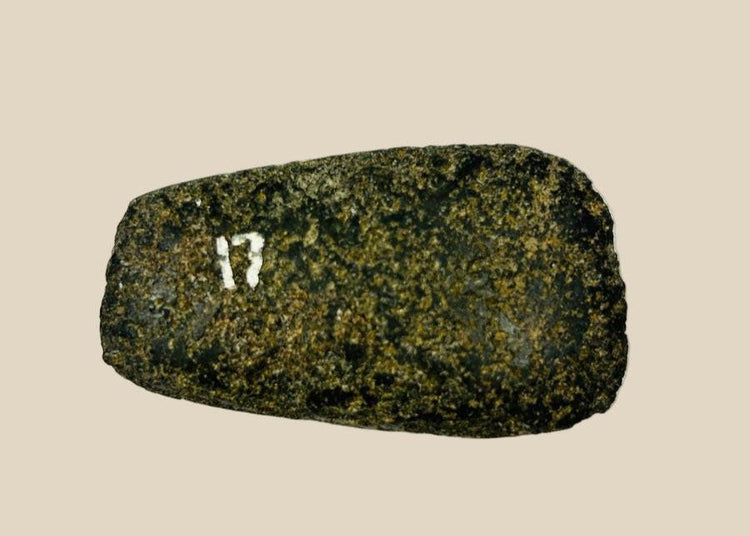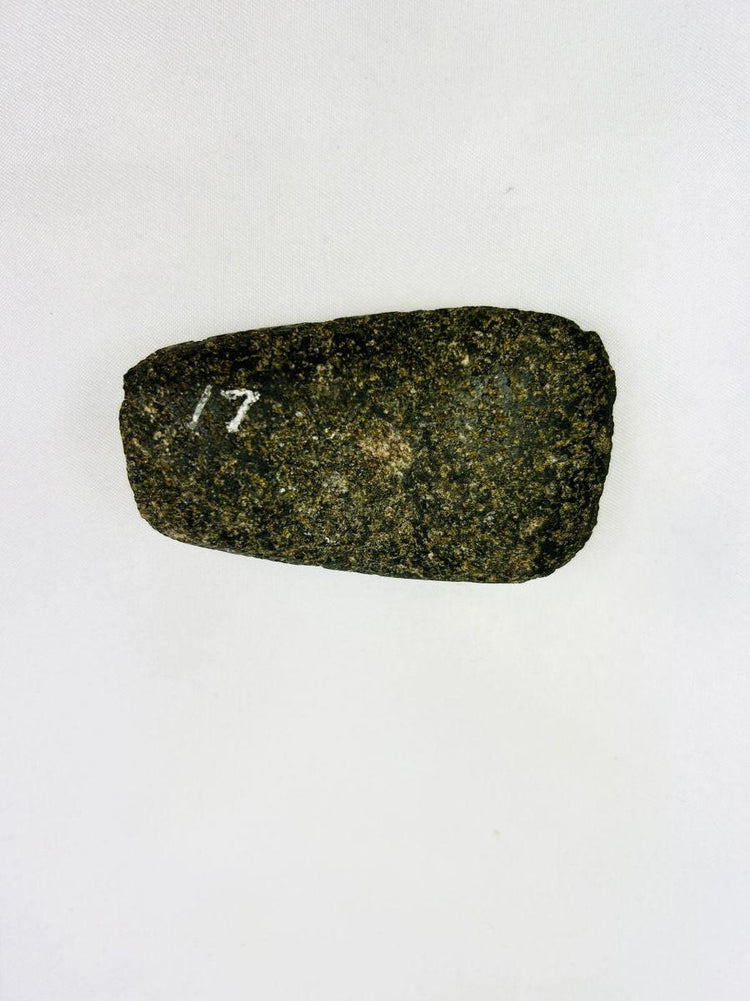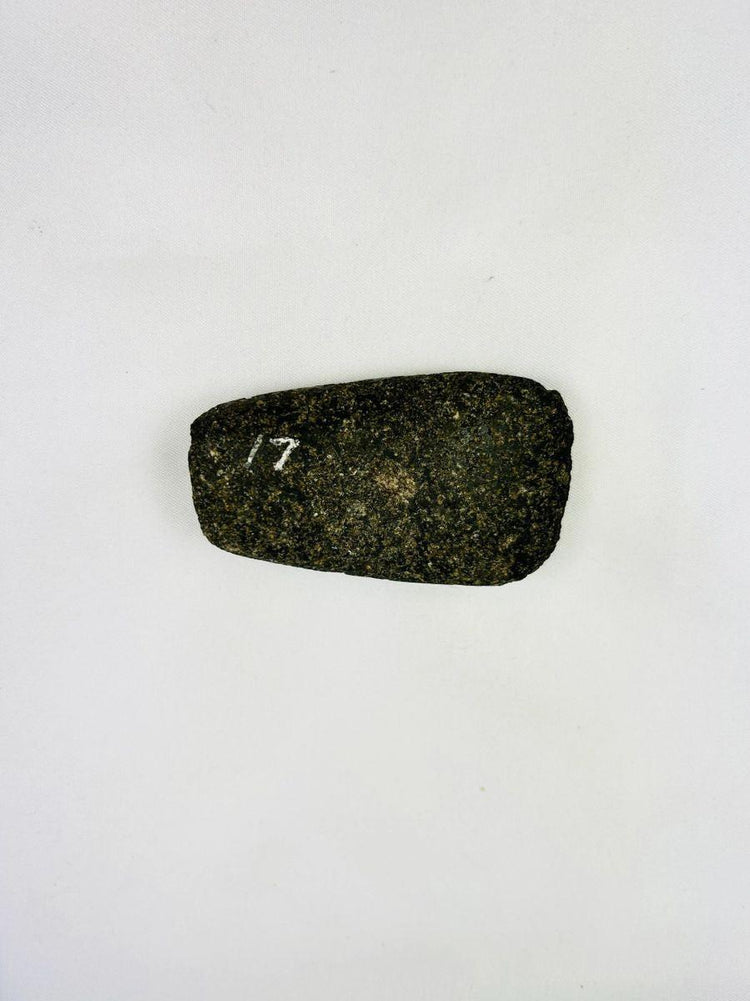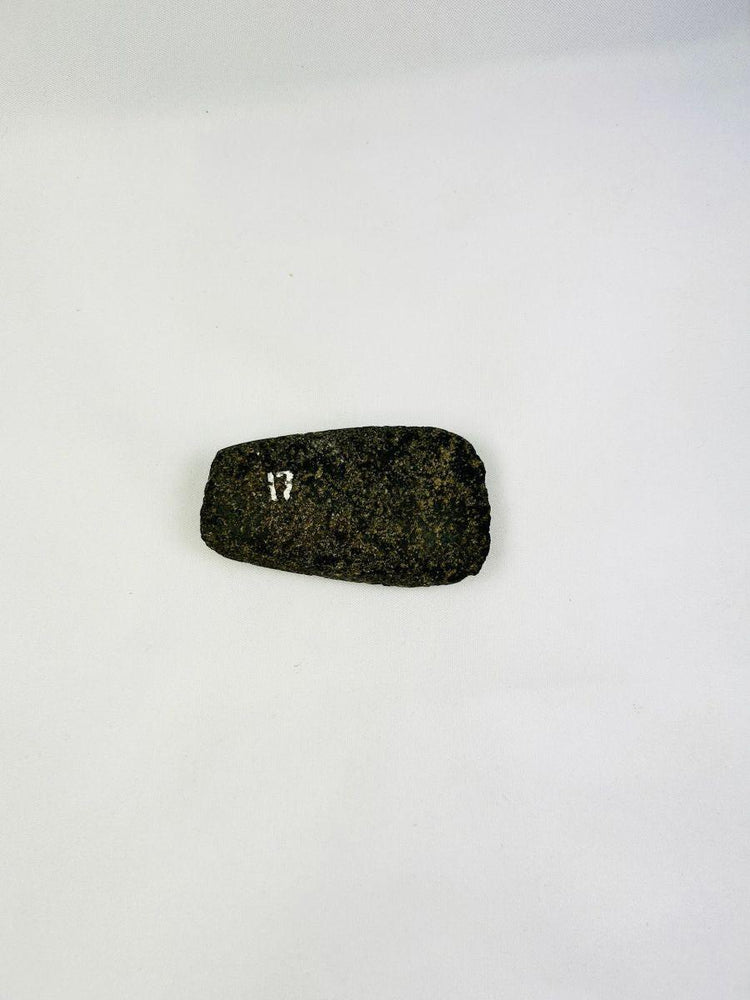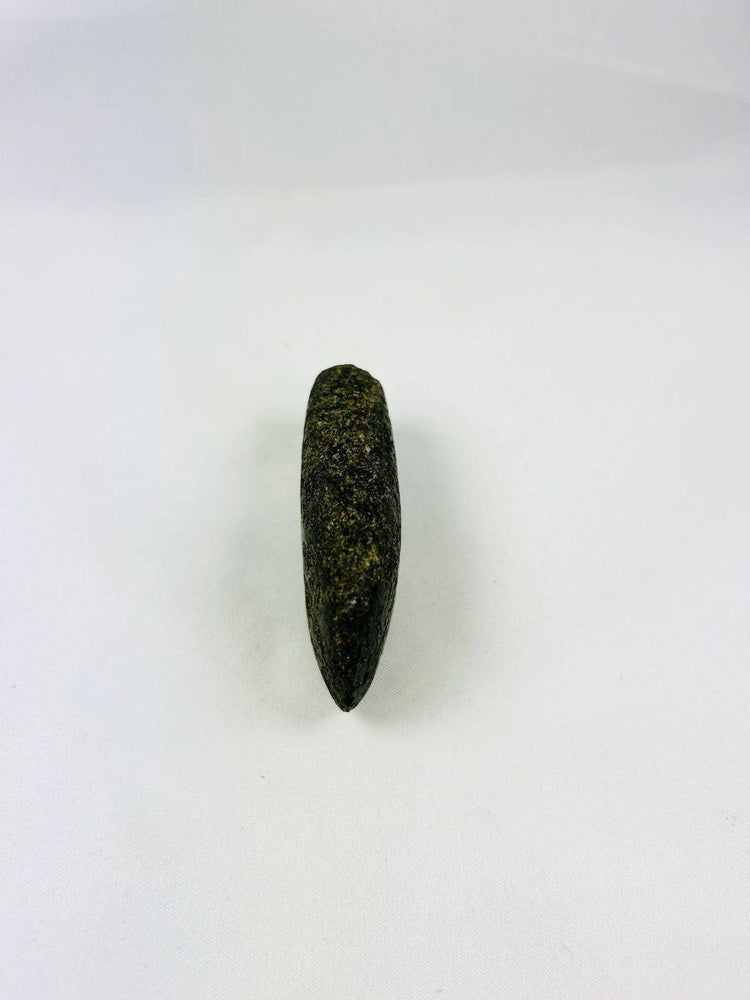Ancient Andean Artifact | Functional Stone Axe with Patina & Provenance | Pre-Columbian Era, 200–800 CE
Description
More
Less
Historical Context & Origin
Region: Ecuador or Peru, Andean region
Material: Ground stone
Period: 200–800 CE (Pre-Columbian)
Description
This small hand-crafted axe is a utilitarian version of the larger and more ornate notched axes of ancient South America. Measuring approximately 3 inches by 1.5 inches, it was designed for everyday use rather than ceremony. The axe shows evidence of prolonged service, with multiple resharpenings and a rounded, use-worn edge. Fully ground surfaces and steep beveling reflect a skilled finishing process, while the presence of an archaeological number further confirms its authenticity and documented provenance.
Features
- Fully ground faces, eliminating early shaping traces
- Steeply beveled cutting edge, resharpened many times
- Rounded, use-worn edge from long-term use
- Archaeological numbering confirming provenance
Cultural Significance
Unlike prestige or ceremonial axes, this tool was crafted for daily function, likely serving in woodworking, food preparation, or craftwork. Ground-stone technology was central to Pre-Columbian Andean societies, illustrating both their practical ingenuity and their cultural reliance on durable tools. This axe offers a direct connection to the daily lives of ancient South American peoples, reflecting their resourcefulness and craftsmanship.
Condition
Excellent archaeological condition with visible wear and patina from extensive use. Edges remain intact, with surface wear consistent with age.
Dimensions (approximate)
Height: 3 in
Width: 1.5 in
Age
200–800 CE (Pre-Columbian)
Description
Historical Context & Origin
Region: Ecuador or Peru, Andean region
Material: Ground stone
Period: 200–800 CE (Pre-Columbian)
Description
This small hand-crafted axe is a utilitarian version of the larger and more ornate notched axes of ancient South America. Measuring approximately 3 inches by 1.5 inches, it was designed for everyday use rather than ceremony. The axe shows evidence of prolonged service, with multiple resharpenings and a rounded, use-worn edge. Fully ground surfaces and steep beveling reflect a skilled finishing process, while the presence of an archaeological number further confirms its authenticity and documented provenance.
Features
- Fully ground faces, eliminating early shaping traces
- Steeply beveled cutting edge, resharpened many times
- Rounded, use-worn edge from long-term use
- Archaeological numbering confirming provenance
Cultural Significance
Unlike prestige or ceremonial axes, this tool was crafted for daily function, likely serving in woodworking, food preparation, or craftwork. Ground-stone technology was central to Pre-Columbian Andean societies, illustrating both their practical ingenuity and their cultural reliance on durable tools. This axe offers a direct connection to the daily lives of ancient South American peoples, reflecting their resourcefulness and craftsmanship.
Condition
Excellent archaeological condition with visible wear and patina from extensive use. Edges remain intact, with surface wear consistent with age.
Dimensions (approximate)
Height: 3 in
Width: 1.5 in
Age
200–800 CE (Pre-Columbian)
You May Also Like
















